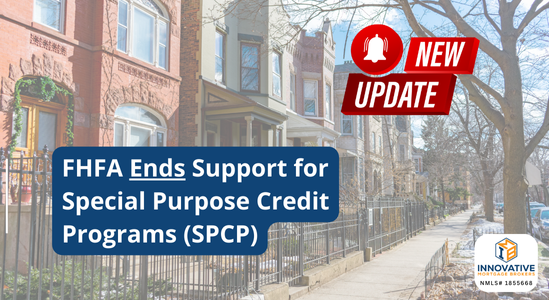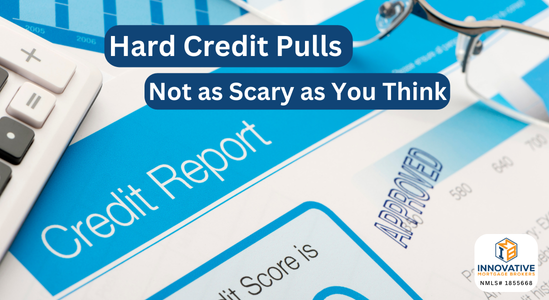What It Means for Borrowers and the Industry In a significant policy shift, the Federal…
Why is my Mortgage Score Different than What I see Online?
If you get your credit score from your credit card company or bank but then apply for a mortgage, and the score is different, you might wonder why.
Two types of credit scores dominate the market – mortgage credit scores and consumer credit scores. Mortgage scores are what mortgage lenders use to determine if you qualify for a mortgage, but they aren’t the same as consumer credit scores.
What are Mortgage Scores?
Your mortgage credit score is what most lenders pull to determine if you qualify for financing. Most lenders pull your FICO score 2, 4 or 5, a brand of credit score, and all three credit bureaus provide it – TransUnion, Equifax, and Experian.
FICO scores range from 300 – 850, with 850 being a perfect credit score (most people don’t have this.). The average lender requires a credit score of 680+ to qualify for the best rates, terms, and mortgage programs. However, loan programs like FHA allow scores as low as 580.
How do they Work?
Mortgage credit scores put most of the emphasis on your payment history and credit utilization. This means they focus on how well you pay your bills and how much of your credit lines you have outstanding (less is better).
Here’s a breakdown of the credit scoring model for FICO credit scores.
- Payment history (35%) – This tracks if you make your payments on time. Any payment made over 30 days late counts against you and will hurt your credit score. However, any payments you make on time can greatly improve your credit score.
- Credit utilization (30%) – This tracks how much of your available credit lines you have outstanding. For the best results, your credit utilization shouldn’t be more than 30% or $300 or less for every $1,000 in credit line. In addition, your credit utilization shows how responsibly you use your credit lines.
- Credit length (15%) – The ‘older’ your credit is, the better it is for your credit score. It gives the credit bureaus more to ‘grade’ to give you a score. The easiest way to get more points in this category is to keep old credit open, if possible. For example, don’t close credit cards you don’t use. Instead, keep them open to increase your credit age.
- Credit mix (10%) – This proves that you can handle many types of credit, such as revolving and installment debt. For example, if you only have credit cards, you have all revolving debt and don’t prove that you can handle fixed monthly payments on an installment loan.
- New credit (10%) – This tracks every new inquiry on your credit report. When a lender pulls your credit, it slightly hurts your credit score.
What are Consumer Scores?
Consumer credit scores are educational scores. Like FICO scores, they range from 300 – 850, and the higher the score, the better.
Consumer credit scores typically are called FICO Score 8 or the Vantage model. In addition, you can get free credit scores from sites like Credit Karma and your credit card companies.
These scores are meant to help you understand your credit history and how it might affect your score. You can use the information to correct any issues to improve your mortgage FICO score, but they typically won’t match exactly what lenders see.
How do They Work?
Like FICO scores 2, 4 and 5, FICO Score 8 and Vantage scores have a formula to calculate your score. Here’s a breakdown.
- Payment history (40%) – Your payment history is just as influential in the Vantage scoring model as in FICO. For example, late payments more than 30 days past due can drastically hurt your credit score.
- Age and type of credit (21%) – This category tracks your type of credit mix (revolving and installment) and your credit age. Again, the older your credit is, the better it is for your credit score.
- Credit utilization (20%) – This tracks how much of your credit lines you have outstanding. If you use your credit line and pay it off in the same month, it’s better for your score than if you carry a large balance.
- Balances (11%) – This is another way credit card and loan balances hurt your credit score. The higher your balances, the riskier it is for new lenders to lend you money, so they hurt your Vantage score.
- Recent inquiries (5%) – Anytime you apply for new credit, it decreases your credit score slightly.
- Available credit (3%) – If you have too much unused credit, it shows lenders you take out credit even if you don’t need it. This isn’t a huge factor, but it makes up a part of your Vantage score.
Which is Better?
If you’re considering applying for a mortgage, it’s best to know your FICO score 2, 4, and 5. You’ll have to pay for it, as they aren’t available for free like consumer credit scores, but you’ll get the most accurate answer before applying for a mortgage.
You can access your FICO score for a fee from each of the three credit bureaus – Experian, TransUnion, and Experian.
If you just need an idea of where you stand, focus on your payment history and credit utilization on your consumer credit score. This is what lenders focus on in your FICO score and are the factors that have the largest impact.
Final Thoughts
Consumer credit scores help you understand the factors that make up your credit score, but the algorithm is much different than mortgage credit scores.
If you want a clear picture of what makes up your mortgage score, consider pulling your free credit reports from www.annualcreditreport.com. This won’t provide your credit score but a clear picture of your credit history. Since your credit history is the same no matter who pulls your credit, you’ll know the factors that make up your credit score and can predict your mortgage score.
If you find issues on your free credit report, fix them for the best results when applying for a mortgage.





